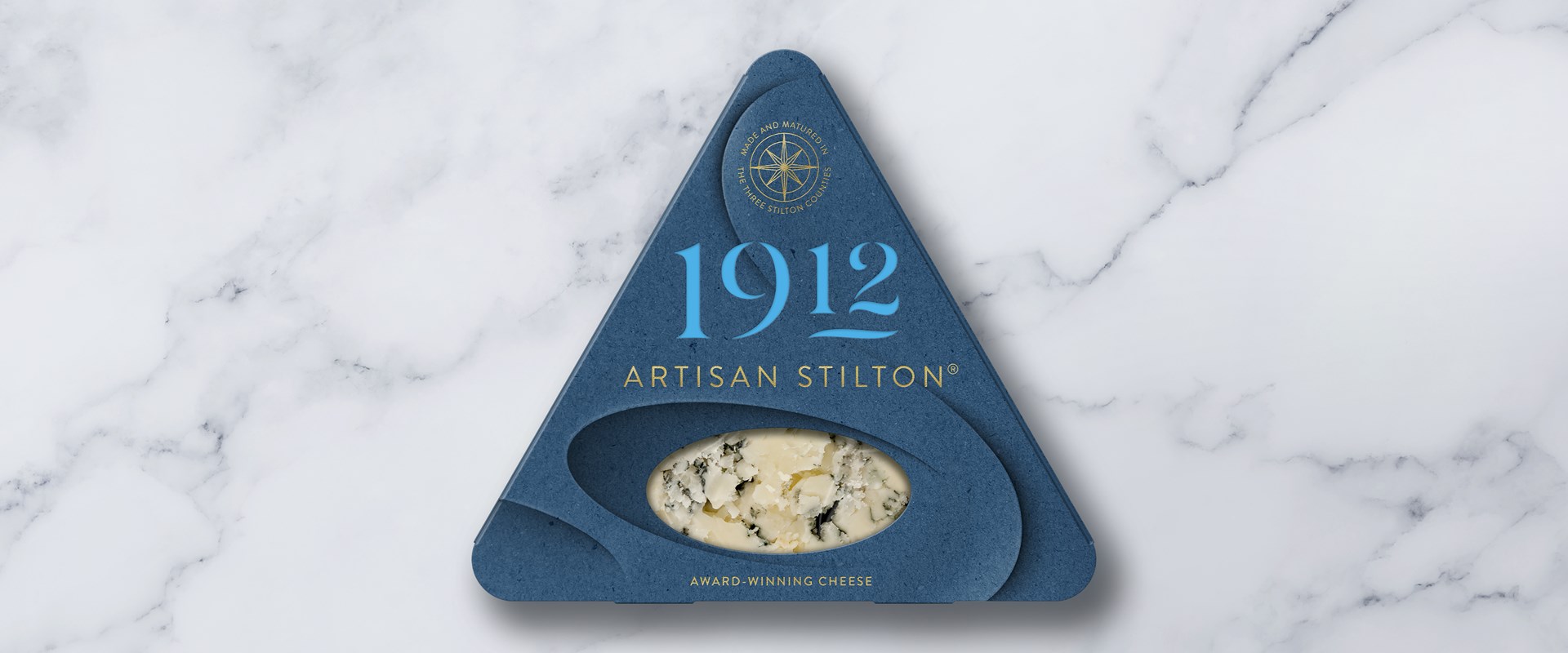Stilton cheese is an important part of British culture, and is one of the world’s most iconic cheeses.
Known for its distinct creamy texture and unique flavour, blue Stilton cheese is made using traditional methods at just six dairies worldwide, all based in the UK’s rural midlands, due to its Protected Designation of Origin (PDO) status. Stilton’s PDO protects its reputation by ensuring that its unique characteristics are preserved as a result of its geographical origin, and strict guidelines on the production process.
Pioneering Stilton for well over a century, Long Clawson Dairy is a farmer-owned dairy based in Leicestershire, UK. Long Clawson’s master cheese makers combine innovative techniques with century-old methods and family recipes passed down through generations. All businesses must innovate, and the cheese industry is no exception. At the heart of Long Clawson’s repertoire lies the 1912 Stilton, its new artisan blue cheese dubbed ‘the most delicious blue cheese in the world’ by none other than celebrity chef and brand ambassador Marco Pierre White. Sticking to its roots, Long Clawson appropriately named the 1912 after the year the dairy was established as a co-operative, developed and produced using innovative techniques and age-old methods.
Stilton is a vital feature on cheese boards during the festive period, and Christmas is indeed peak Stilton season. The cyclical nature of Stilton gives rise to added difficulties when launching a new product, as customers may be naturally less-inclined to try it out of season. As with launching any new food product, launching a new cheese requires months of rigorous planning, branding, marketing and regulatory compliance considerations. For products generally sold in generic industry packaging, such as Stilton (typically wedge-shaped in transparent wrapping), packaging and branding are even more crucial to make a new product stand out amongst saturated supermarket shelves. Appealing, yet functional, packaging is critical, which the 1912’s distinct packaging addresses. Displayed in triangular cardboard packaging, registered design law has been key to protect the 1912 packaging.
Trade marks are crucial to protecting unique brand identity. Long Clawson's registration for “1912” is a good example of this, as it provides a strong basis to challenge third parties who may seek to use the same or a similar mark.
Contractual considerations are equally important in relation to food product designs. This includes ensuring from the outset when engaging any third party designers that the IP sits with the company commissioning the design, rather than the designer. If not, this can be rectified by an IP assignment, provided that the designer is willing to engage.






